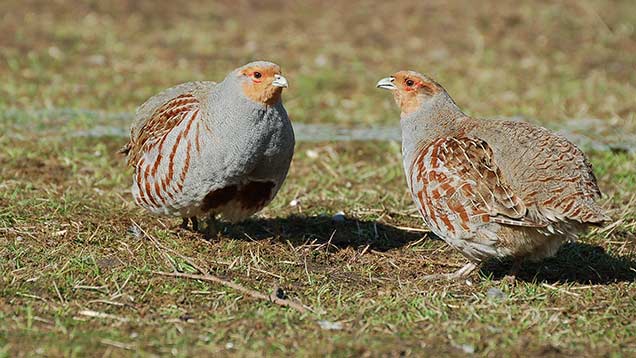Farmers help threatened grey partridge bounce back
 ©Peter Thompson
©Peter Thompson Farmers have helped make a breakthrough in the battle to reverse the decline of one of the UK’s most endangered farmland birds.
Grey partridge numbers have increased by 18% over the past 12 months, according to the Game and Wildlife Conservancy Trust (GWCT).
The number of grey partridges increased by 4.730 birds to a total of 33,250 in the trust’s latest annual Partridge Count Scheme (PCS).
More than 1,000 farmers and gamekeepers have thrown their weight behind saving this iconic species. Twice a year – in spring and autumn – they count their birds to see how numbers are faring.
See also: Protect pollinators – the next ‘big ask’ on farms
Dr Roger Draycott, a GWCT senior scientist, said: “For the first time in several years we had excellent summer weather during the peak hatching season for grey partridge chicks.
“Where farmers and keepers had put in place a good bundle of management measures, we are witnessing a fantastic turnaround in numbers in most regions of the UK, which was reflected in the 2014 PCS autumn count data.”
The wild grey partridge population has suffered a massive drop in numbers of more than 86% from 1967-2000 because of land use changes and the indirect effect of pesticides.
This killed off the insects that young chicks depend on to thrive – they need at least 2,000 insects a day to survive.
However, the GWCT, which has been monitoring the birds since 1933 through PCS, said the counts last year showed an impressive uplift in its population.
The effect of agri-environment schemes on grey partridges showed a positive reflection at farm level, the trust said.
“Grey partridges can bounce back really quickly given the right conditions, particularly as they lay more eggs than any other bird in this country – as many as 18 eggs in one nest,” said Dr Draycott.
“But when bird numbers are low, they need targeted management, such as good year-round habitats, including nesting, brood rearing and overwinter cover.
“They also benefit from supplementary food over winter as well as protection from predators during the breeding season.”
There was a distinct regional variation in grey partridge numbers across the country last autumn. But, encouragingly, all regions within the count scheme recorded an increase in bird densities in 2013-14.
On the Rotherfield Park Estate, in East Tisted, Hampshire, researchers recorded 100 wild grey partridges on their land last autumn. Ten years ago, they had none.
Grey partridge are found predominantly in lowland arable areas of the UK. Their numbers are seen as a flagship indicator of the health of the countryside.
Grahame Madge, an RSPB spokesman, said: “The grey partridge is one of the UK’s most rapidly declining species, so the news that the bird appeared to enjoy a good breeding season in 2014 is extremely welcome for all those farmers and conservationists trying to reverse the fortunes of this species.
“Last year followed two previously bad years, providing relief that with the right combination of good land management and favourable weather, this bird is able to escape seemingly inevitable decline.”
pic caption: Wild grey partridges (pictured), which were once common across the country have suffered an 86% decline, but monitoring by the Game & Wildlife Conservation Trust shows that a warm summer this year could help to restore numbers in many areas
